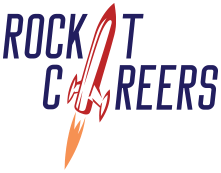Remember that moment? The first time someone asked, “What do you want to be when you grow up?” or pushed you towards a specific achievement? From childhood dreams to team championships to academic targets, we’re bombarded with the idea that success hinges on setting goals. But what if that’s a myth?
The Goal Trap: Stress, Shortcuts, and the Post-Achievement Slump
We’ve all bought into the goal-setting narrative. It makes sense: goals provide direction and motivation. Yet, they often lead to a cycle of stress and disappointment.
- The Pressure Cooker: Goals create a constant sense of urgency. We’re always racing against the clock, leading to anxiety and burnout. When things don’t go according to plan (and they rarely do), the stress intensifies.
- Ethical Shortcuts: The obsession with achieving goals can lead to dangerous compromises. History is filled with examples, like the Challenger disaster, where the drive to meet a deadline overshadowed critical safety concerns.
- The Emotional Rollercoaster: The pursuit of a goal can be emotionally draining. We experience the crushing disappointment of near-misses (like the silver medalist’s blues) and the fleeting satisfaction of achievement, followed by the inevitable “What now?”
- The Hamster Wheel: Achieving a goal often leads to setting another, creating a relentless cycle of pursuit without true fulfillment.
Introducing the Systems Approach: A Sustainable Path to Success
Instead of fixating on a destination, what if we focused on the journey? This is the essence of a systems-based approach.
- The Journey, Not the Destination: A system is a set of consistent practices that improve your odds of success. It’s about continuous improvement, not a singular endpoint.
- Flexibility and Adaptability: Systems allow for flexibility. You have a general direction, but you’re not bound by rigid timelines or specific outcomes.
- Success in the Process: With a system, “failure” becomes a learning opportunity. Each experience, positive or negative, contributes to your growth.
Building Your Winning System: Key Components
Here’s how to create a system that fosters continuous growth and fulfillment:
Uncover Your Strengths:
- Knowing your natural talents is crucial. Focus on developing skills that align with your strengths, maximizing your potential.
- Understand that while you can learn new things, your natural talents provide a foundation for faster and more effective growth.
Cultivate Essential Skills:
- Expand your skill set beyond your comfort zone. Focus on versatile skills like communication, critical thinking, and adaptability.
- These skills will enhance your capabilities across various roles and industries.
Embrace Learning from “Failures”:
- Shift your perspective from “failure” to “learning.” Each setback provides valuable insights for improvement.
- As Nassim Nicholas Taleb suggests, experience, even through mistakes, builds resilience and reliability.
Pursue Strategic Opportunities:
- Continuously seek opportunities for growth and development. Don’t become stagnant in a comfortable role.
- View each experience as a stepping stone, acquiring new skills and expanding your network.
- Think of each job as a level in a video game, with new skills being the new weapons.
Articulate Your System:
- Be prepared to explain your approach to others, especially in professional settings.
- Show how your experiences and skills align with your long-term vision.
- In cover letters, resumes and interviews, make sure to show how each step of your career has been logical and purposeful.
Your Unique Path:
There’s no one-size-fits-all system. Your path to success is unique to you. Embrace the journey of self-discovery and continuous improvement.
Call to Action:
- Reflect on your current approach to your career and life.
- Identify your strengths and areas for skill development.
- Embrace a systems-based mindset and create your own path to fulfillment.
- If you need assistance, consider seeking guidance from a career coach.

